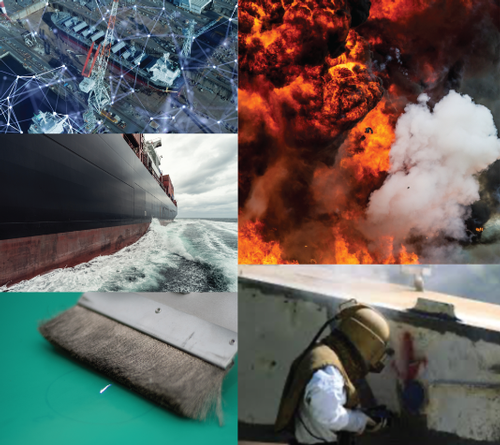TUESDAY, FEBRUARY 14, 2023
Voting continues for the Readers’ Choice Awards, where readers of the Journal of Protective Coatings & Linings cast their ballot for their favorite articles of 2022. Participants will also be entered into a raffle to win one of 10 free print subscriptions to JPCL.
Voting for the program’s sixth consecutive year opened this month and will continue through March 3, closing at midnight ET. JPCL readers are encouraged to pick their favorite articles published between January 2022 and December 2022.
The articles from the year are classified into five categories:
“By now, we’ve all likely done our own personal account of the past year, and have already set out to accomplish the goals we’ve made for ourselves in 2023,” said Charlie Lange, JPCL Editor-in-Chief. “We here at JPCL are no different; in these first weeks of the new year, we’ve internally reviewed some of what we’ve accomplished in 2022 in order to assess where we’re headed in the coming months.
“This includes recognizing the outstanding work our authors have put in on articles, as well as those involved in outstanding protective coatings projects over the past year.”

 |
Winners will be announced in the March issue of JPCL. Cast your ballot here.
Process Technology
Each week until the voting deadline, PaintSquare Daily News will delve into each award category to provide recaps of each eligible article. This week, we will review the articles included in the Process Technology category.
In “A New Method for Testing Passive Fire Protection Coatings Performance,” Richard Holliday of PPG Protective and Marine Coatings highlights a comprehensive test regimen that compared five intumescent epoxy PFP products commonly specified for hydrocarbon industry steel structures. Several recent high-profile PFP coating failures in cold-weather climates have demonstrated the need for more rigorous testing of intumescent epoxy coatings for such environments.
Next, “Proactive Hull Cleaning in Challenging Operations at Sea” covers how preventing biofouling is not only about protecting ships against hull damage or loss of earning capacity due to weight and reduced speed. Author Adam Stuchlik of Jotun Paints Inc. introduces a new, remotely operated proactive cleaning system that can be employed to keep ship hulls clean while at port or at sea, outlining the potential benefits of this cleaning method.
Continuing on, Sangki Chi, Mana Al-Mansour and Mohammed Alrudayni from Saudi Aramco present an evaluation of the workability, cleanliness grade and coating performance achievability by using different cleaning methods during maintenance coating operations in “Optimized Surface Preparation Methods for Maintenance and Repair Coatings.” This follows the introduction of new power tool cleaning methods that can create a surface profile and cleanliness grade that is less than what abrasive blasting can achieve, but much better than conventional power tools.
“Are You Ready for a Holiday? Industry Misconceptions Around Testing for Discontinuity” focuses on the use of high-voltage holiday detection testing and the methods required to get consistent results on any project. It includes a discussion on results of a test program designed by the authors to determine the validity of different testing voltages and the resulting consistency of holidays detected. This article was authored by Cameron Walker, Avid Protective Products, Inc.; and Vaughn O’Dea, Joshua Bell and Javier Tormes, Tnemec Company, Inc.
Focusing on the development of truly autonomous robot that undertakes the three stages of ship hull rehabilitation—washing, blast-cleaning and painting— “Automating Shipyards to Increase Productivity and Reduce Waste” discusses the specifications that led to the emergence of this autonomous option and its performance in-service since being deployed in shipyards last year. The authors of this article include Christian Favennec, Naval Group; Stéphane Renouard, AMBPR SAS; and Hubert Vincent, Damen Shiprepair Dunkerque.
To view last week's eligible articles in the Coating and Materials category, click here.
JPCL Archives, Subscriptions
Did you know JPCL is available in multiple formats? In addition to the print edition, you can read the full January issue as a digital flipbook online, in a downloadable PDF or as individual articles on paintsquare.com.
Following the release of each issue, the magazine is added to the JPCL archives—containing 25 years of JPCL digital issues dating back to 1996—which cover a priceless collection of evergreen information, solutions to real-life problems, case studies, insight from experts and a historical record of the industry.
Click here to subscribe today. For information on Group Subscriptions, click here.
Tagged categories: Avid Protective Products, Inc.; Awards and honors; Coatings Technology; Holidays; Jotun; JPCL; JPCL Readers' Choice Awards; Linings; Passive Fire Protection; PPG; Program/Project Management; Protective coatings; Saudi Aramco; Ships and vessels; Shipyards; Surface preparation; Technology; Technology Publishing Co.; Tnemec